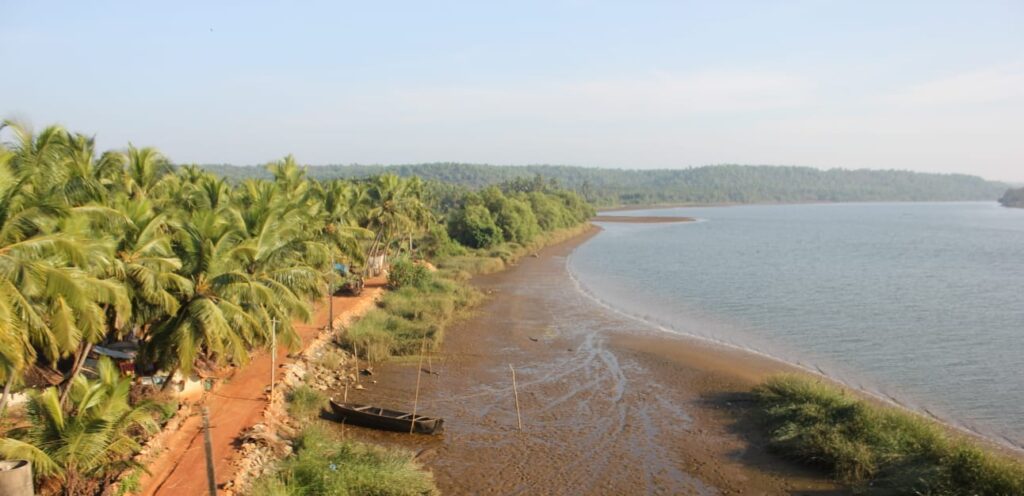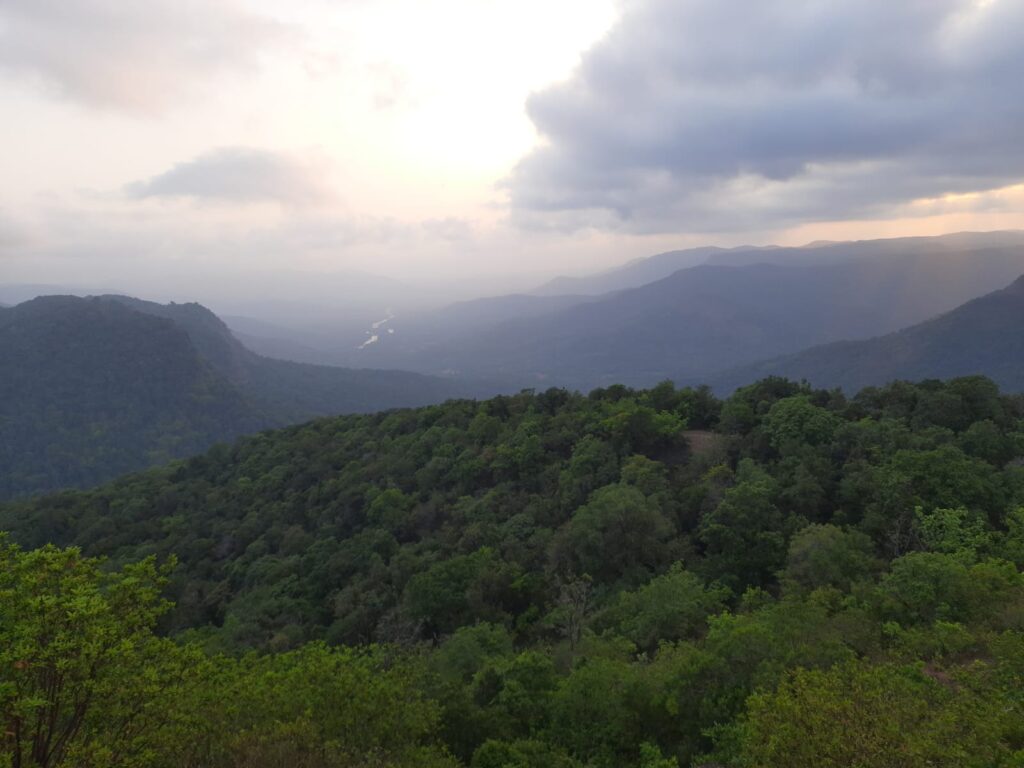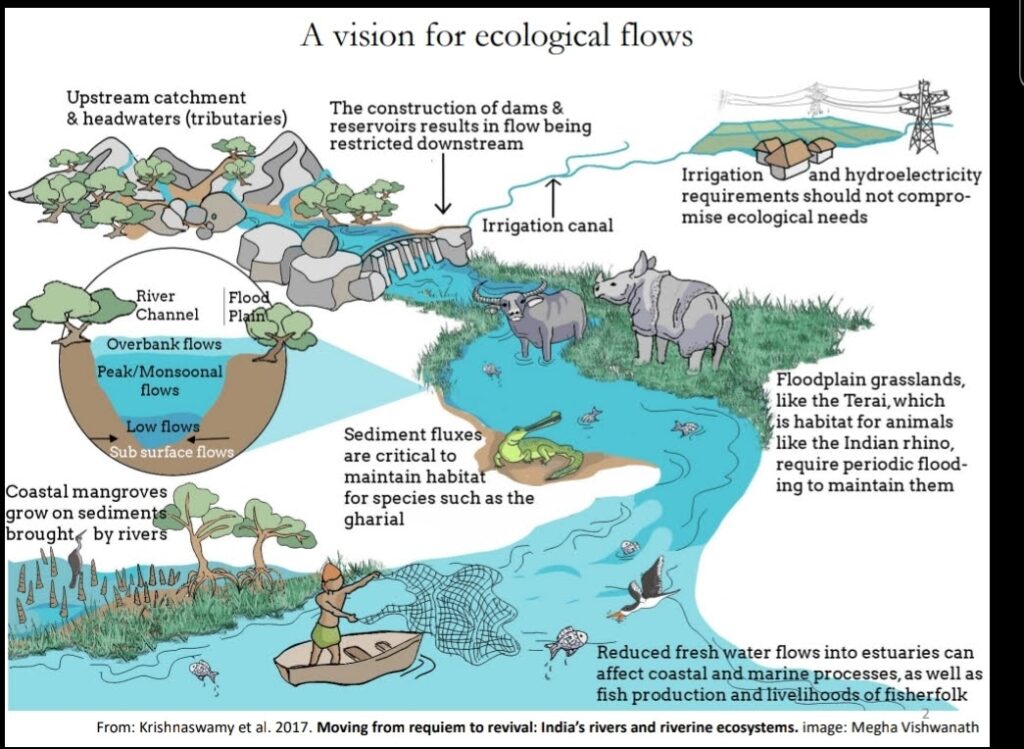
R S Tejus:
The diversion of River Aghanashini seems to be another Yettinahole in the making.
Even after 11 years of the implementation of Yettinahole Integrated Project at a cost of Rs 23,251 crore, it is providing water to only two out of the seven parched districts despite spending Rs 16,076 crore. Since its inauguration, a miniscule 2 tmcft of water has been supplied out of the promised 24 tmcft.
There are bad ideas, and then there are ideas so catastrophic that they deserve their own Hazardous Sign. Diverting the Aghanashini, a free-flowing west-bound river of the Western Ghats, across ridges and forests to feed the River Vedavathi in drought-hit Chitradurga, falls squarely in that category.
It is the civil-engineering version of playing God with a hacksaw. From the word go, the Aganashini project needs to be opposed neither “studied,” nor “piloted,” but junked.
The sales pitch rests on one myth: water reaching the sea is “wasted.” Hydrologists have debunked this theory for years.
Freshwater meeting the sea sustains estuaries, deltas, mangroves and coastal fisheries; it regulates salinity, buries carbon in coastal sediments, and supports thousands of livelihoods. Cutting that off is not saving water; it is collapsing the unique ecosystems that feed people and protect coasts from catastrophes.
What the river diversion really does is break two basins at once. In the source basin, the Western Ghats catchment works like a sponge – healthy forests and soils store monsoon rain and release it slowly through the year as baseflow.

Carve canals, blast tunnels, and run heavy infrastructure across these fragile slopes, and you fragment forests, increase soil erosion, destabilize hillsides, and worsen water quality.
This is how you invite landslides in August and dry taps in April. Hydrologists warn that such linear intrusions be it rail/road/canal corridors and their service roads invariably cause cascading, sometimes irreversible impacts on basin hydrology and biodiversity.
In the receiving basin, long cross-ridge transfers -bleed water through seepage, evaporation and pumping losses which has happened in Yettinahole. You spend heavily to move water over terrain that does not want to cooperate, and end up with a trickle that cannot justify the ecological and financial cost. Even the premise behind inter-basin links that some basins are permanently “surplus” and others “deficit” does not hold under climate variability.
STUDY REPORTS
The recent IPCC report on Oceans and Cryosphere has warned that estuaries or deltas in South Asia and millions of people are particularly vulnerable to inundation due to sea-level rise and salinization.
A recent study in India has shown that inter-linking of rivers will significantly reduce the sediment reaching our deltas and estuaries, thereby making them even more vulnerable to climate change impacts.
AGHANASHINI ESTUARY
Meanwhile, the Aghanashini estuary – one of the richest on the west coast of Karnataka depends on steady river discharge. Reduce flows – mangroves shrink, fish nurseries decline, and saline water pushes inland.
The Aghanashini diversion will be a direct hit on artisanal fisheries and farming families who rely on the estuary’s seasonal rhythm. Rivers are not pipes; they are living systems from headwaters to sea.
YETTINAHOLE, A BITTER LESSON
Karnataka has already tasted the bitter lessons of reckless river diversion. The Yettinahole project, pushed through despite widespread protests, has left a trail of eco-destruction in the Western Ghats.
- Catchments were fragmented,
- Forests cleared without any clearances,
- Headwater streams altered,
- This led to drying river stretches downstream,
- Causing erosion, and community distress.
Far from solving water scarcity, it has permanently scarred the ecosystem, showing how short-sighted engineering solutions can create irreversible damage.
River Aghanashini’s diversion risks will be repeating this disaster on an even bigger scale in Karnataka.
If the aim is to solve water stress in Chitradurga, exporting water from a Western Ghats’ River is the slowest, costliest, disastrous and riskiest path.
The faster, cheaper, safer path is to fix demand and strengthen local hydrology. The work is unglamorous and cheap but it works.

WHY RIVER AGHANASHINI DIVERSION WILL TURN A PROBLEM INTO A DISASTER?
- It breaks the source catchment’s “sponge”: forest fragmentation reduces infiltration, raises flash runoff, and degrades baseflows.
- It starves the coast: blocking freshwater and sediment weakens estuaries, fisheries, mangroves and even monsoon-linked dynamics.
- It overpromises delivery: seepage and pumping losses gut actual supply, while interlinking risks spreading pollutants and invasives.
- It hurts livelihoods first: estuary-dependent fishermen and farmers lose long before Chitradurga gains.
- It locks in the wrong incentives: once crores are sunk into concrete, cheaper and smarter water management options are sidelined.
WHAT IS THE ALTERNATIVE?
The proven path instead is clear. Stop breaking catchments – ban mining in river basins, prevent forest fires, and protect tributaries. Notify rivers and their corridors as Eco-Sensitive Areas under the Environment Protection Act. Fix demand in drought-prone districts with tank revival, cropping shifts, wastewater reuse, and drip irrigation that can save up to 80% water while raising yields. Operate existing reservoirs better, instead of creating new ecological wounds.
The bottom line from hydrology is blunt: Civil Engineering alone cannot secure rivers.
Ariver is the sum of its catchment, its flow, its sediment, its estuary, and the communities it sustains. Break that whole, and no volume of concrete will put it back together.
Karnataka can spend the next decade stitching basins into a costly Frankenstein monster and still end up thirstier and poorer.
Or it can protect the Western Ghats catchments, respect the coast-bound flows that keep fisheries and mangroves alive, and make Chitradurga water-secure by repairing its own hydrology.
The diversion of River Aghanashini is neither science-driven nor future-proof.
Dr. Jagdish Krishnaswamy, leading hydrologist in India emphasizes, “Such large-scale transformations in a river basin should be the last resort and only on a case-by-case basis with adequate mitigation measures. Instead, we should focus on adaptive management of existing dams, reservoirs and barrages and in reducing area under water intensive crops wherever feasible.”
This disastrous proposal deserves not a feasibility study, but an outright rejection. If Karnataka wants true water security, it must choose conservation over diversion, and catchment healing over basin-breaking. Anything else will leave us with broken rivers, broken coasts, and broken promises.

FRESH-SEA WATER MIXING IS VITAL
“Inter-linking of rivers is based on the premise that some river basins are having surplus water while others are deficient. This so-called ‘surplus’ water in river basins performs important functions such as transporting sediment from hills, all the way to other larger rivers and finally to the sea. This movement of sediment as also the habitat it creates in rivers (sand bars, islands and sand-banks) is vital for biodiversity, and river ecology.”
Finally, this sediment along with fresh-water mixing with sea-water sustains highly productive estuaries and deltas and coastal ecosystems that sustains our rich coastal fisheries. Even if you buy the argument of surplus/deficient basins, climate change and its effects on extreme weather events is already changing hydrology and distribution of water and is likely to continue to change the moisture and temperature regimes in some basins, so no there is permanency.
Inter-linking of rivers with different geologies, bio-geographies and water quality regimes is likely to negatively impact eco-communities in river ecosystems, introduce pollution from one river to another and also transfer invasive fishes to less disturbed river systems.
